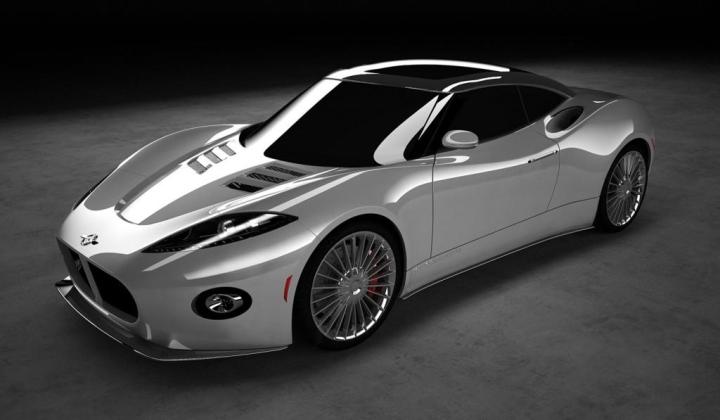
If a Porsche 911 Turbo seems to too common for you, there’s a new alternative from the Netherlands on the way.
Spyker Cars is slowly getting back into the business of building zany, baroque supercars after its unsuccessful attempt to revive Saab. The company revealed the first images (via Motor Authority) of the production version of the B6 Venator, an “entry-level” model that it hopes will grow the brand.
The Venator was first shown as a concept at the 2013 Geneva Motor Show, and the styling hasn’t changed much since then. Besides necessary additions like like turn signals, the only notable changes are extra hood vents, deleted side intakes, and a more-normal spoiler at the front, and a smaller diffuser and toned-down taillights at the back.

The demands of production typically take some of the zing out of concept cars, but these changes are fairly minor. That’s a good thing for Spyker, as the B6 Venator’s unique styling will probably be one of its biggest selling points.
Underneath the stylish skin is an aluminum chassis, with a 3.5-liter V6 mounted in the middle. The engine, which is reportedly Toyota-derived, will produce around 375 horsepower, and will be mated to a six-speed automatic transmission.
Spyker hopes to deliver the first cars to customers in early 2015. Pricing hasn’t been announced, but Spyker previously said the Venator would cost between $125,000 and $150,000.
Interestingly, the company will also issue 100 Venator bonds, which allow individual customers to reserve one of the first cars while helping fund production. Think of it as the One Percent’s version of Kickstarter.


